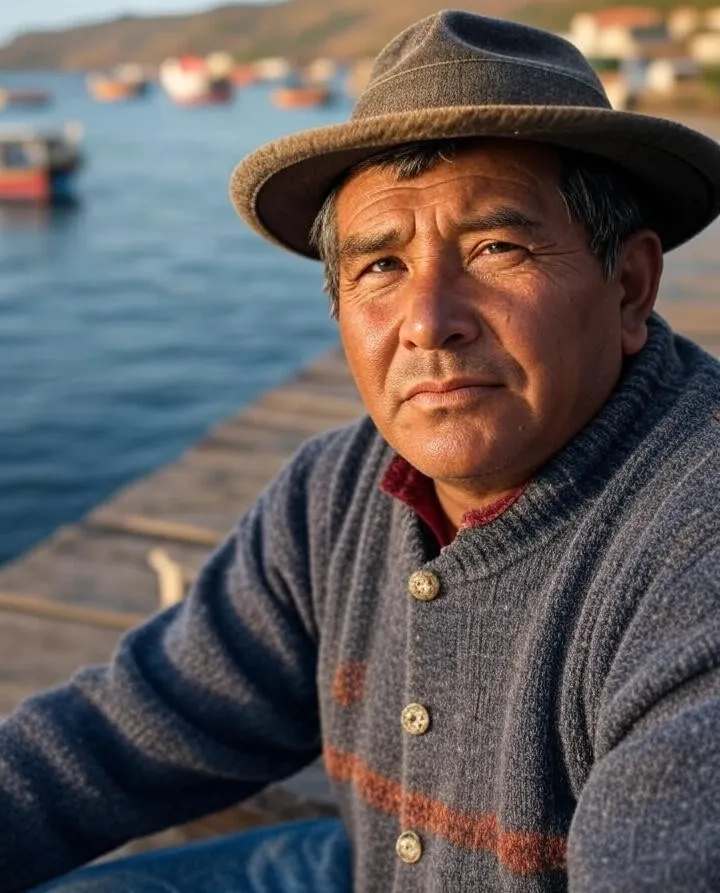Fisheries in Peru Technologies Challenges and Prospects

Why Fisheries Are a Cornerstone of Peru’s Economy in 2025
Peru’s rivers and lakes pulse with life, weaving a vital thread through the nation’s economy and culture. From the Amazon’s biodiverse waterways to the Andean highlands, fisheries and aquaculture drive food security, rural livelihoods, and global exports. In 2025, Peru stands as a leader in sustainable fish farming, fueled by innovation and a commitment to preserving its natural wealth. This guide explores the technologies transforming Peru’s fisheries, the challenges they face, and the opportunities for sustainable growth, offering insights for investors, environmentalists, and communities. Dive into Peru’s investment landscape.
Key Strengths of Peru’s Fisheries Sector
Natural Wealth Fueling Aquaculture Growth
Peru’s diverse ecosystems—spanning the Amazon Basin, Andean lakes, and coastal waters—create ideal conditions for aquaculture. Clean rivers, stable climates, and nutrient-rich waters support a variety of species, including:
Tilapia, a resilient and fast-growing fish popular in local and export markets.
Trout, thriving in highland lakes like Titicaca.
Amazonian species such as paco and gamitana, prized for their cultural and commercial value.
These conditions make Peru a hub for fish farming, with aquaculture production projected to grow by 10% annually through 2030, according to industry forecasts. Regions like San Martín and Loreto are particularly promising due to their abundant freshwater resources. Learn about the Peruvian Amazon’s biodiversity.
Cutting-Edge Technologies Driving Efficiency
Peru’s fisheries sector is embracing modern technologies to boost productivity while minimizing environmental impact. Innovations include:
Recirculating Aquaculture Systems (RAS): These systems recycle water, reducing waste and maintaining optimal conditions for fish health.
Automated feeding systems: Sensors optimize feed distribution, cutting costs and preventing overfeeding.
Disease monitoring tools: Real-time water quality sensors and AI-driven diagnostics reduce fish mortality rates.
These advancements ensure high-quality production, from hatcheries to processing, meeting strict international standards for exports to North America, Europe, and Asia. Explore sustainable investment opportunities in Peru.
Economic and Social Impacts of Fisheries
Peru’s fisheries contribute significantly to the economy, generating over $3 billion in export revenue annually and supporting more than 200,000 jobs, particularly in rural and coastal communities. The sector fuels:
Global trade: Peru is a top exporter of fishmeal, tilapia, and Amazonian fish to markets in the EU and Asia.
Tourism: River fishing experiences attract eco-tourists, boosting local economies.
Food security: Fish farming provides affordable protein for millions of Peruvians.
This economic ripple effect strengthens rural resilience and reduces poverty in remote areas. Discover business opportunities in Peru.
Opportunities for Sustainable Fisheries Growth
Aquaculture as a Path to Sustainability
Aquaculture is the future of Peru’s fisheries, reducing pressure on wild fish stocks while meeting growing global demand. By 2025, the government aims to double aquaculture output through initiatives like:
Subsidized training programs for small-scale farmers to adopt sustainable practices.
Public-private partnerships to fund infrastructure like hatcheries and processing plants.
Eco-certifications to attract premium markets in Europe and North America.
For investors, aquaculture offers stable returns, with tilapia farms yielding up to 15% ROI in well-managed operations. Learn about investing in Peru’s jungle resources.
Job Creation and Community Empowerment
Fisheries drive economic growth in Peru’s rural regions by:
Creating jobs in fish farming, processing, and logistics, particularly for indigenous communities.
Supporting local supply chains, from feed production to eco-tourism services.
Reducing urban migration by offering sustainable livelihoods in remote areas.
For example, projects in the Amazon have empowered communities in Ucayali and Loreto, where fish farming cooperatives have boosted incomes by 20% in recent years.
Linking Fisheries with Eco-Tourism
The rise of eco-tourism in Peru opens new opportunities to combine fisheries with experiential travel. River fishing tours, where visitors catch native species like gamitana or learn about sustainable aquaculture, are gaining popularity. These ventures not only generate revenue but also raise awareness about biodiversity conservation. Read about Peru’s nature reserves.
Challenges Facing Peru’s Fisheries Sector
Environmental Pressures and Pollution
Despite its strengths, Peru’s fisheries face environmental challenges:
Water pollution from agricultural runoff and mining affects water quality in rivers like the Ucayali.
Climate variability disrupts water availability, particularly in Andean regions.
Overcrowding in fish farms increases disease risks, requiring costly interventions.
The government is addressing these issues through stricter regulations and investments in water treatment, but progress remains uneven.
Infrastructure and Market Constraints
Logistical hurdles can hinder growth:
Limited rural infrastructure complicates transportation of fresh fish to markets.
Local market saturation puts downward pressure on prices, especially for tilapia.
High initial costs for advanced technologies like RAS deter small-scale farmers.
These challenges require strategic planning and partnerships to ensure scalability. Learn key considerations for land-based investments.
Balancing Growth with Biodiversity Protection
Overfishing and poorly managed farms can threaten Peru’s ecosystems. For instance, unregulated fish farming in the Amazon has led to habitat degradation in some areas. To mitigate this, the industry must prioritize:
Eco-friendly systems that minimize waste and water use.
Regular monitoring of water quality and fish health.
Compliance with environmental regulations to protect native species.
Practical Steps for Engaging with Peru’s Fisheries
Starting a Sustainable Fish Farm
For those interested in entering the fisheries sector, key steps include:
Choose a suitable location: Regions like San Martín or Loreto offer abundant water and government support.
Invest in technology: Adopt RAS or automated feeding systems for efficiency and sustainability.
Secure permits: Obtain environmental and aquaculture licenses through Peru’s Ministry of Production (PRODUCE).
Working with local experts ensures compliance and community support. Get guidance on legal processes.
Partnering with Local Communities
Engaging indigenous and rural communities is essential for success:
Collaborate on cooperative fish farms to share resources and profits.
Offer training in modern aquaculture techniques to empower local farmers.
Respect cultural practices, such as sustainable fishing traditions tied to the Amazon’s heritage.
This approach aligns with the AYATUNE ethos of honoring the land and its people.
Exploring Investment Opportunities
Investors can explore:
Direct investment in fish farms or processing facilities.
Eco-tourism ventures combining fisheries with river-based experiences.
Carbon offset programs tied to sustainable aquaculture practices.
These options offer both financial returns and environmental impact. Learn about Peru’s investment climate.
Building a Sustainable Future for Peru’s Fisheries
Peru’s fisheries sector is a vibrant melody of opportunity, blending economic growth with environmental stewardship. With cutting-edge technologies, supportive policies, and a commitment to sustainability, Peru is poised to lead in global aquaculture by 2025. By addressing challenges like pollution and infrastructure gaps, and embracing community-driven and eco-friendly practices, the industry can thrive while preserving the Amazon’s sacred ecosystems.
Ready to explore this dynamic sector? Discover more with Weles Group and deepen your understanding through our blog on sustainable opportunities in Peru.
Peru Ministry of Production: https://www.gob.pe/produce
Learn more about our Peru business expertise /about-us/
Explore our jungle land investment opportunities /land-for-sale/
View our current sustainable projects /projects/
View featured investment property /amazon-eco-retreat-peru-investment
